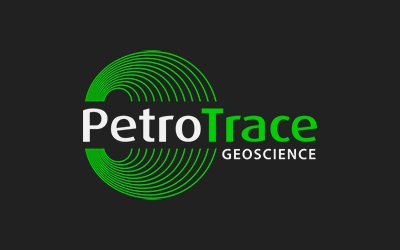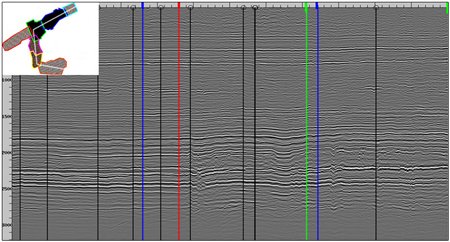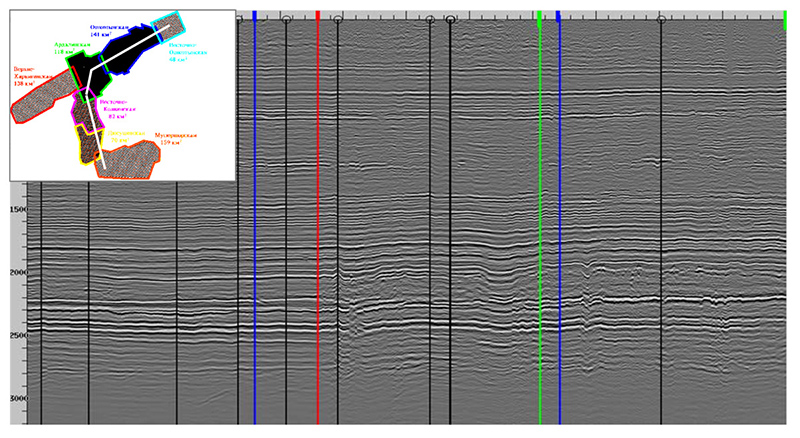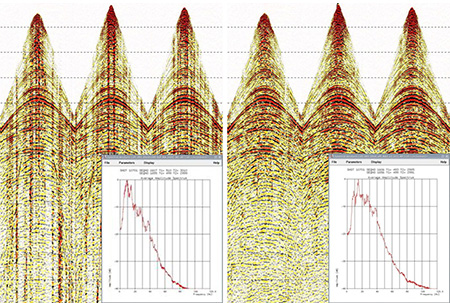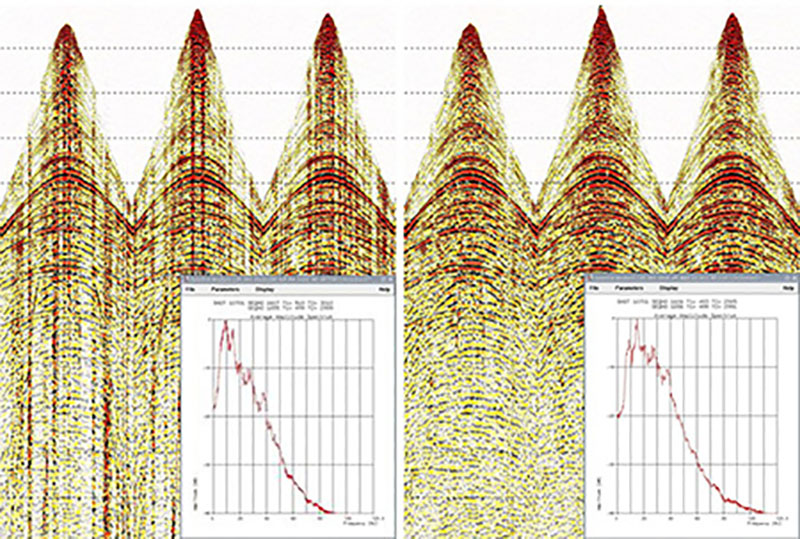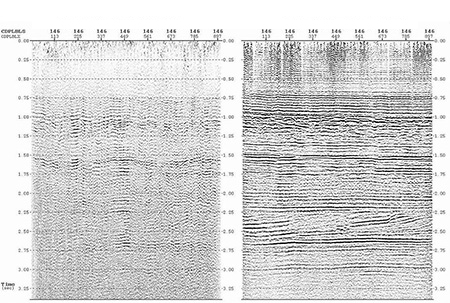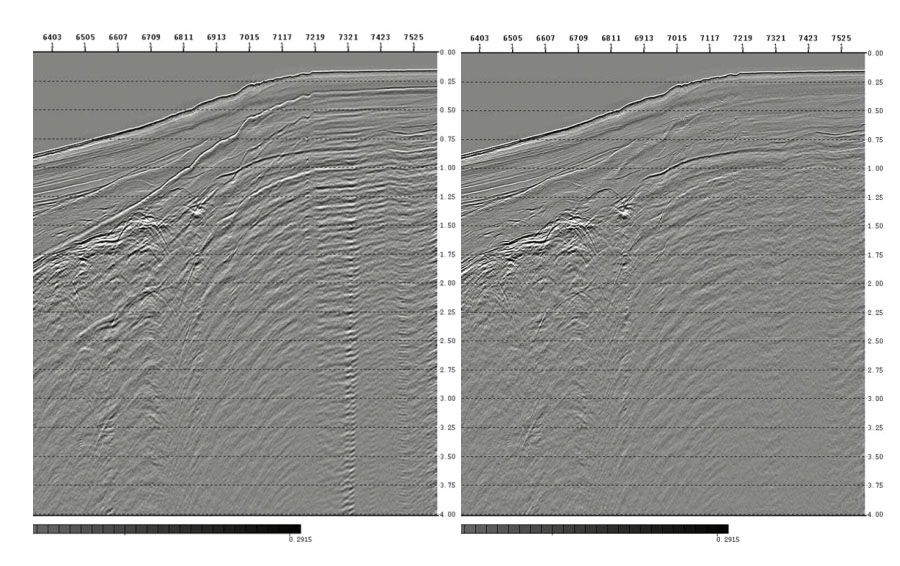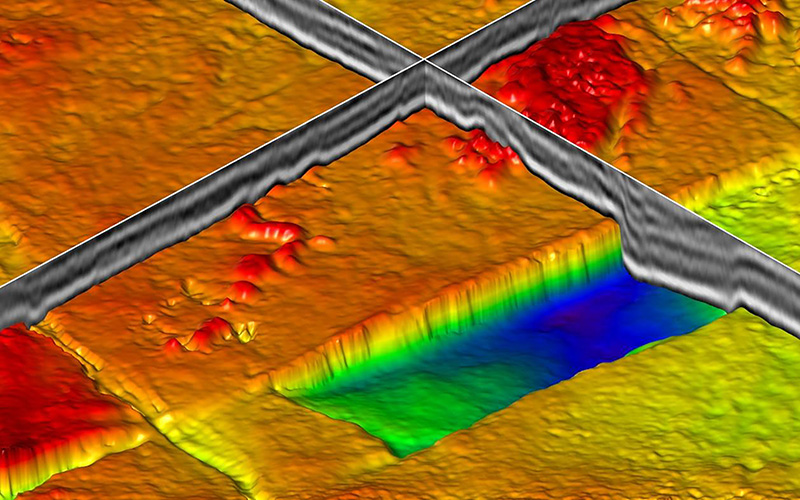
Efficient signal extraction

Efficient signal extraction
The availability of a high resolution seismic image predetermines the effectiveness in addressing geological objectives. At PetroTrace we apply the most advanced commercial and proprietary processing technology and tools for optimal signal analysis and extraction in 2D/3D/4D/4C seismic data. This allows us to carry out thorough and effective time and depth migration, structural interpretation and reservoir characterisation.
The availability of a high resolution seismic image predetermines the effectiveness in addressing geological objectives. At PetroTrace we apply the most advanced commercial and proprietary processing technology and tools for optimal signal analysis and extraction in 2D/3D/4D/4C seismic data. This allows us to carry out thorough and effective time and depth migration, structural interpretation and reservoir characterisation.
Data Merging and Regularisation
One project may contain several seismic surveys obtained in different geological environments using different acquisition designs and parameters. Correct integration and regularisation of heterogeneous seismic data sets is a key determinant of the effectiveness of all subsequent processing procedures. PetroTrace geophysicists have decades of experience in the balancing, harmonising and regularisation of 2D / 3D seismic data sets obtained by different operators at different times. Enquire about this service >>
Amplitude Friendly Processing
Maintaining the amplitude-frequency characteristics of the signal is one of the critical conditions for a reliable kinematic and dynamic interpretation. To effectively extract the signal PetroTrace specialists employ flexible adaptive noise attenuation techniques that allow optimally to preserve the original distribution of amplitudes and frequencies. Our in house developed quality control tools allow for a continuous processing audit that minimises migration artefacts and costly re-runs. Enquire about this service >>
Static Anomaly Correction
Significant differences in source and receiver elevations as well as the velocity anomalies in the upper section can significantly distort the seismic image of the subsurface. PetroTrace offers a full set of tools including proprietary techniques for static corrections of varying magnitude and frequency, both reflection and refraction. We use the leading edge commercial software and proprietary methods to correct for topography and model anomalies caused by permafrost, sand dunes, basaltic intrusions and buried channels. Enquire about this service >>
Multiple Reflection Attenuation
Multiple reflections, or the energy of waves reflected from more than one interface, bring a high degree of uncertainty in structural interpretation and seismic reservoir characterisation. The presence of multiples complicates the identification of reflections from the target horizons and does not allow a detailed interpretation of structural and stratigraphic elements in a study interval. PetroTrace geophysicists use the most innovative methods to attenuate multiples of different nature, both before and after migration, including such procedures as SRME, WEMA and DEGHOSTING. Enquire about this service >>
High Density Processing
Data recorded with the use of high-density seismic surveys without grouping, have a higher vertical and horizontal resolution, compared with those obtained by conventional survey designs. The seismic resolution enhancement leads to a significant increase in the accuracy of structural interpretation and reservoir properties prediction. However, the initial volume of seismic data obtained using high-density surveys requires considerable computing power and data storage capacity. PetroTrace has both the necessary experience and powerful resources for processing and analysing such large data sets. Enquire about this service >>


